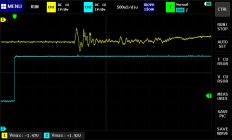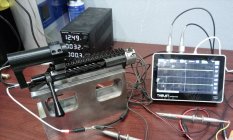As we are continuing to improve every aspect of our actions, fire control system is at our top concern as it is the number one aspect of a action that accounts for accuracy.
Here is some interesting actual data for the nerdy type like me...
As you can see, about 2 thousands of a second, or 2 milliseconds..
We are continually testing different springs, clearances, masses of firing assembly's, etc.
The yellow line is the force transducer load cell that is .003" off of the bolt face to simulate a case with .003" bump back.


Here is some interesting actual data for the nerdy type like me...
As you can see, about 2 thousands of a second, or 2 milliseconds..
We are continually testing different springs, clearances, masses of firing assembly's, etc.
The yellow line is the force transducer load cell that is .003" off of the bolt face to simulate a case with .003" bump back.












